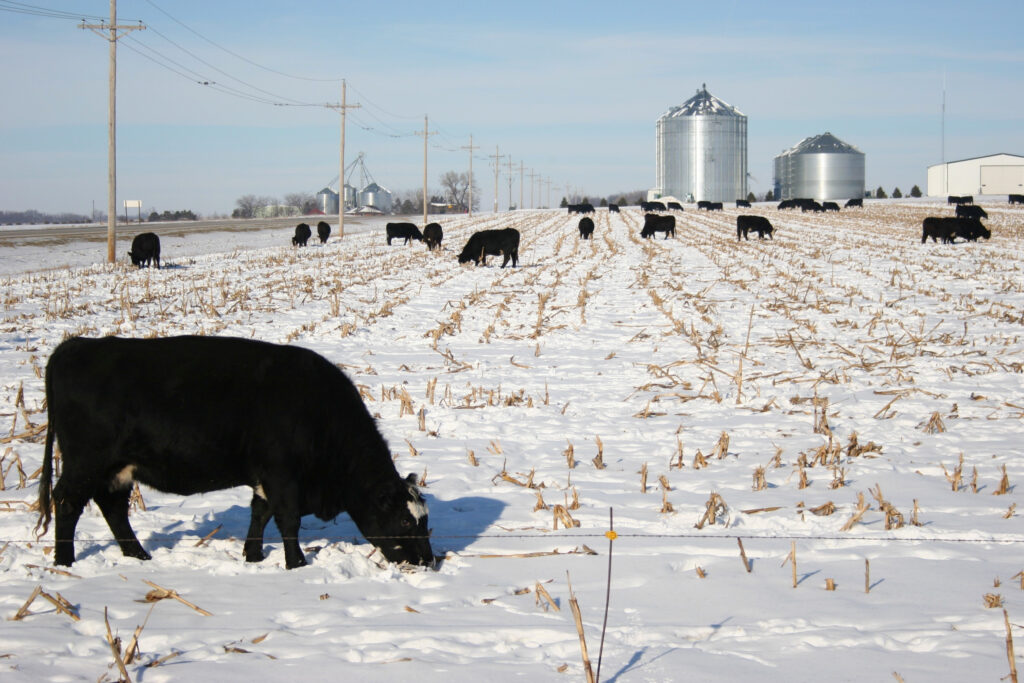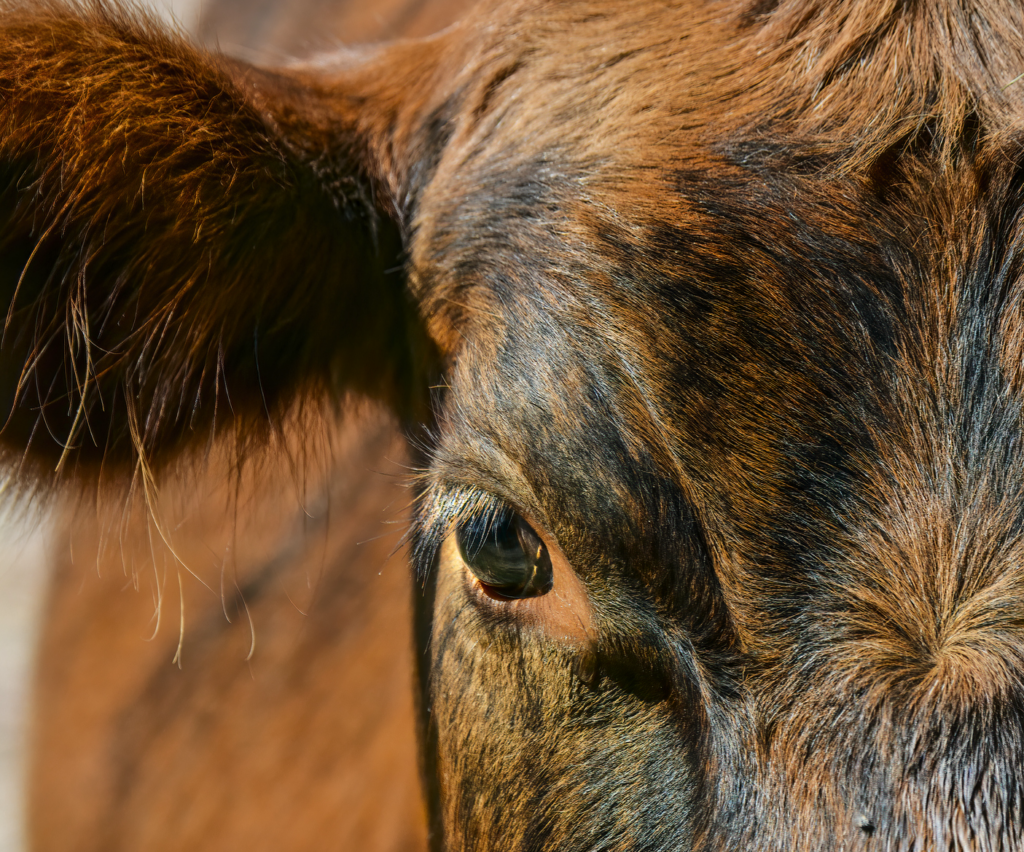While regenerative practices like cover crops, composting, and crop rotation help build the quality of the soil and allow it to and allow it to return better yields, some farmers go even further by integrating livestock into their operations.
Gevo’s bio-based renewable fuels use plants to create a renewable energy source that, when grown with regenerative agriculture, are remarkably proficient at drawing carbon into the soil. While some may be surprised to hear that livestock can actually help fight climate change, the truth is that integrated livestock management is a key component of regenerative agriculture in more ways than one.

Integrated Livestock, Not Confined
Some reports have indicated that livestock farming could be a major contributor of pollution, just like roots or crop residues (corn stalks, husks) that are left on the field. How can using livestock in a regenerative agriculture plan actually sequester carbon?
In conventional agriculture, livestock are often kept in Confined Animal Feeding Operations (CAFOs) that provide little access to the outdoors, resulting in high methane emissions and animal welfare concerns.
But regenerative livestock are integrated into farm fields, with positive results for farmers. Here are some of the ways integrating livestock in a regenerative system decreases climate impact:
- Allowing livestock to graze on land encourages plants to expand their root systems, which improves soil health, fertility, and soil microbiology responsible for carbon sequestration.
- Regenerative systems recycle manure within the farming sytem, reducing the need for fossil-fuel based fertilizers, boosting soil fertility, and minimizing conventional waste ponds.
- Rotational grazing allows for rest periods to support vegetative recovery and helps cool- and warm-season native vegetation to flourish, and also slows the growth of invasive plant species to reduce the amount of chemicals used for weed suppression, saving farmers money.

Building a Self-Sufficient System with Integrated Livestock Management
While not all farmers choose to integrate livestock into their grain operations, they can be an extremely beneficial addition for both biological and financial reasons.
For farmers working with Gevo to grow regenerative feedstock, integrating livestock into their regenerative field corn operations serves a dual purpose:
- Allowing livestock to graze on cover crops or corn stalks provides nutrients to soil microbes which improves soil fertility, which in turn increases yields, and strengthens soil resiliency.
- Farmers growing inedible feed corn, whose starch is used for Gevo’s energy-dense liquid hydrocarbons, can also use the corn protein to make high-quality livestock feed. This animal feed can then either nourish a farmer’s livestock or provide an additional stream of income.
For large farm operations, even livestock waste can serve multiple purposes. As mentioned above, integrating livestock comes with a built-in manure fertilizer system.
Integrated Livestock Management Reduces Risk
While regenerative agriculture focuses on building soil health, supporting farmers’ livelihoods is also a top priority for Gevo.
Integrating livestock into a regenerative farm system is an effective way to not only improve the quality of the crops and upgrade the soil of farm fields but can support a farm’s financial resiliency as well. Here are a few ways that integrating livestock reduces risk:
- Diversifying a farm operation protects the farmer from total loss if a crop fails. Raising livestock alongside a corn or grain operation provides another income stream that can help bridge the gap in difficult years.
- Livestock’s impact on soil carbon, soil health, and other benefits drastically improve the soil’s ability to withstand extreme weather events, such as drought or heavy rainfall erosional events. This reduces a farmer’s risk of washouts, crop failure, or otherwise taking a loss due to weather events.
- Farmers with both grain and livestock are more flexible–as the economy changes, they can shift their cash crop to feed their animals as needed, instead of possibly taking a loss on the market.
- Grazing livestock is a great way to make use of marginal land that is not suitable for growing crops. Farmers that have steeply sloped landscape, wooded, or otherwise unsuitable corners of their property can use that land for animal grazing which helps to improve soil health through the addition of livestock manure.
Without farmers, we would not be able to create a renewable and regenerative bio-based fuel. Ensuring that farmers have the tools they need for success is an important piece of the bigger picture.
Integrated Livestock Management: The Bottom Line
Gevo’s bio-based renewable fuels are built from crops—but farm animals are an integral part of the big picture.
Regenerative agriculture techniques such as integrating cows, sheep, goats, chickens, or pigs can go the extra mile to improve the quality of feedstock crops, decrease the climate impact of agriculture, and ensure that farmers have the success necessary to operate the land for decades to come.
Gevo’s bio-based renewable fuel is not only helping to add organic material including carbon to the soil—it is helping to promote the vitality of the food system.
